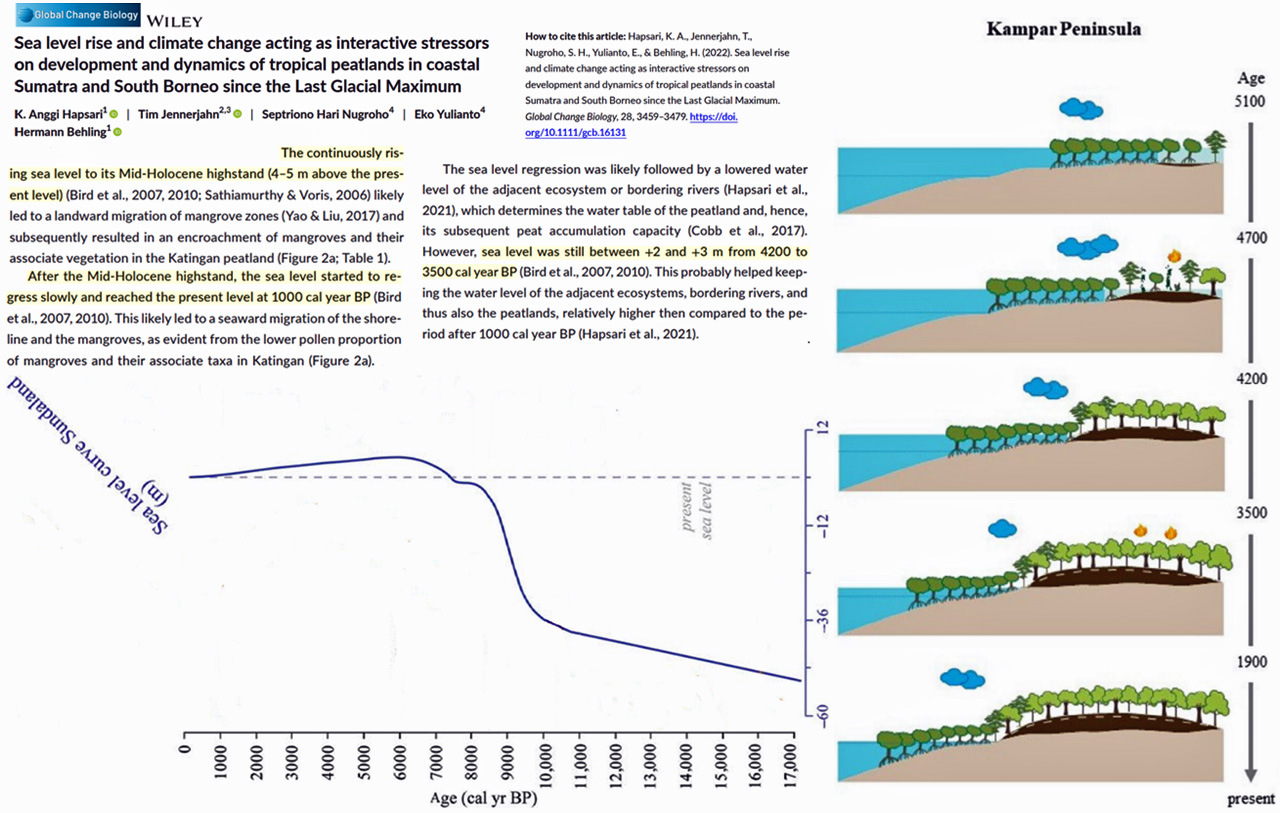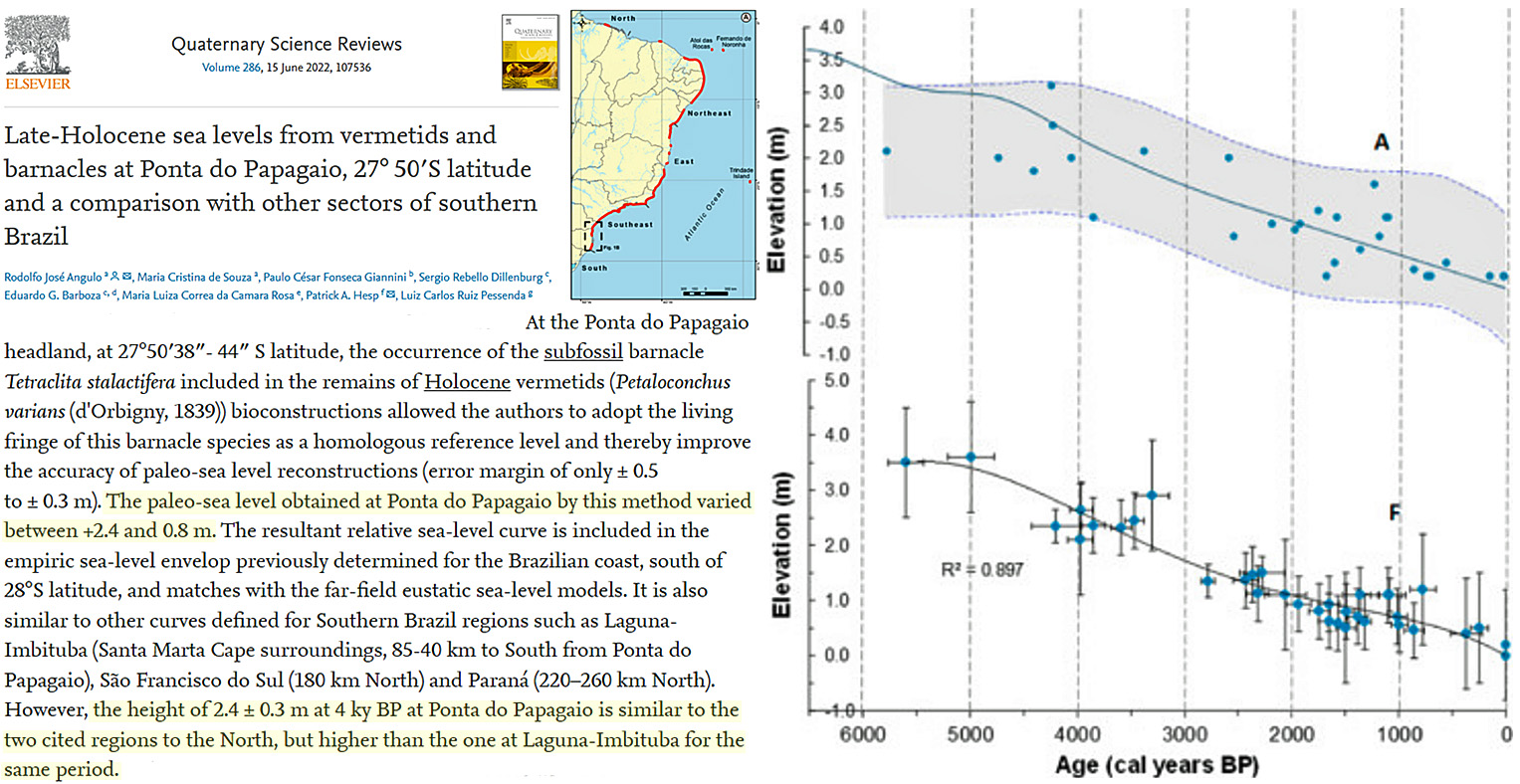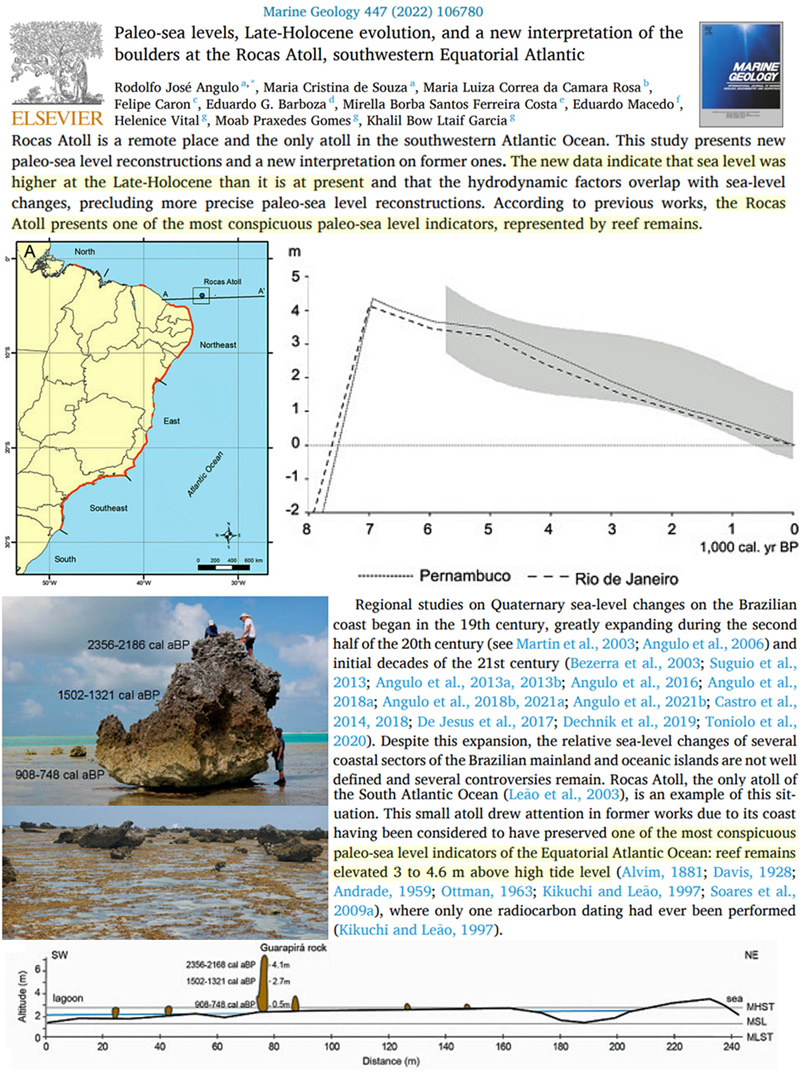By Kenneth Richard on 13. October 2022
During the much-warmer-than-today Mid-Holocene, when CO2 concentrations lingered around 265 ppm, sea levels were multiple meters higher than they are now.
From about 5000 to 7000 years ago, when Earth was several degrees warmer than it is today, there was less water locked up on land as ice. Consequently, relative sea levels were much higher and land areas now well above sea level were submerged beneath the sea.
None of these paleo indicators suggest warmth, ice melt, or relative sea level are consistent with claims CO2 is a climate driver.
1. Hapsari et al., 2022

2. Angulo et al., 2022
3. Watanabe Nara et al., 2022
“In the Middle Holocene (7000 years ago), there was a rapid rise in relative sea level (RSL) to the current sea level on the Japanese coast in response to melting Antarctic ice sheets (Nakada and Lambeck, 1987; Sakaguchi, 1983; Tanabe, 2020; Tanigawa et al., 2013). The RSL during the Middle and the Late Holocene reached an estimated maximum 2 m higher than the current sea level 4000 years ago during the Holocene high stand (HHS, Yokoyama et al., 2012), and morphological observations have confirmed this at Lake Ogawara during the Middle Holocene (Hirai, 1983). At that time, Lake Ogawara was the inner bay of the Pacific Ocean; however, in the late Holocene, as sea levels fell, Lake Ogawara became brackish (Hirai, 1983).”
4. Angulo et al., 2022
“The reconstructions indicate Holocene paleo-sea levels between 3.1 m and 2.5 m above present one.”
“This study presents spatiotemporal paleo-sea-level reconstructions from Abrolhos archipelago and Abrolhos Bank, and fill in a coastline gap of 500 km where no precise paleo-sea level reconstruction exists. The reconstructions are based on sedimentary, biological and geomorphological evidences. The data indicates sea-levels up to 2.9 m higher than the current one between the Mid- to Late Holocene, in agreement with the empirical sea-level envelope and with predictions of geophysical sea-level models for the Brazilian coast.”
5. Angulo et al., 2022
“The new data indicate that sea level was higher at the Late-Holocene than it is at present and that the hydrodynamic factors overlap with sea-level changes, precluding more precise paleo-sea level reconstructions. According to previous works, the Rocas Atoll presents one of the most conspicuous paleo-sea level indicators, represented by reef remains.”
Posted in Paleo-climatology, Sea Levels |








I was in Abu Dhabi several years ago. The Arabian Gulf was clearly >1 m higher than today, some 10km or more inland. I know this because I looked at relic beach deposits that high above the current sabkha.
There are many geologic pieces of evidence that sea levels were higher, treeline were higher. Big deserts stretching through Alberta a Saskatchewan in the last couple of thousand years. Megadroughts in California. But the evidence doesn’t mean anything to the Alarmists.
Why? Because today is Special. CO2 is Special. Physics is Special. Human consumption is Special.
No scientific reasoning will convince an Alarmist. He knows this day and his friends and his mission are Special, outside normal limits of justification and scrutiny.
Sea levels could be misleading. Starting with a hypothetical ice free planet as a reference. Now ice sheets begin building on northern land masses. The apparent sea level would rise as a result of the weight of the ice depressing the land mass. But near the equator, would not the apparent sea level fall from the missing water perched on the land masses in the north?
“From about 5000 to 7000 years ago, when Earth was several degrees warmer than it is today, there was more water locked up on land as ice. Consequently, relative sea levels were much higher and land areas now well above sea level were submerged beneath the sea.”
This doesn’t make sense. More ice on land means less water in the ocean. Is there some further explanation?
“This doesn’t make sense.”
Correct. Because it was a ridiculous error on my part. I meant to write “less” and instead wrote “more”. It’s now been corrected and I am embarrassed that it took this long for me to even see it.
I thought the Holocene sea level high-stand was a well proven thing at many many sites widespread around planet earth. Common downunder around the wide brown land.